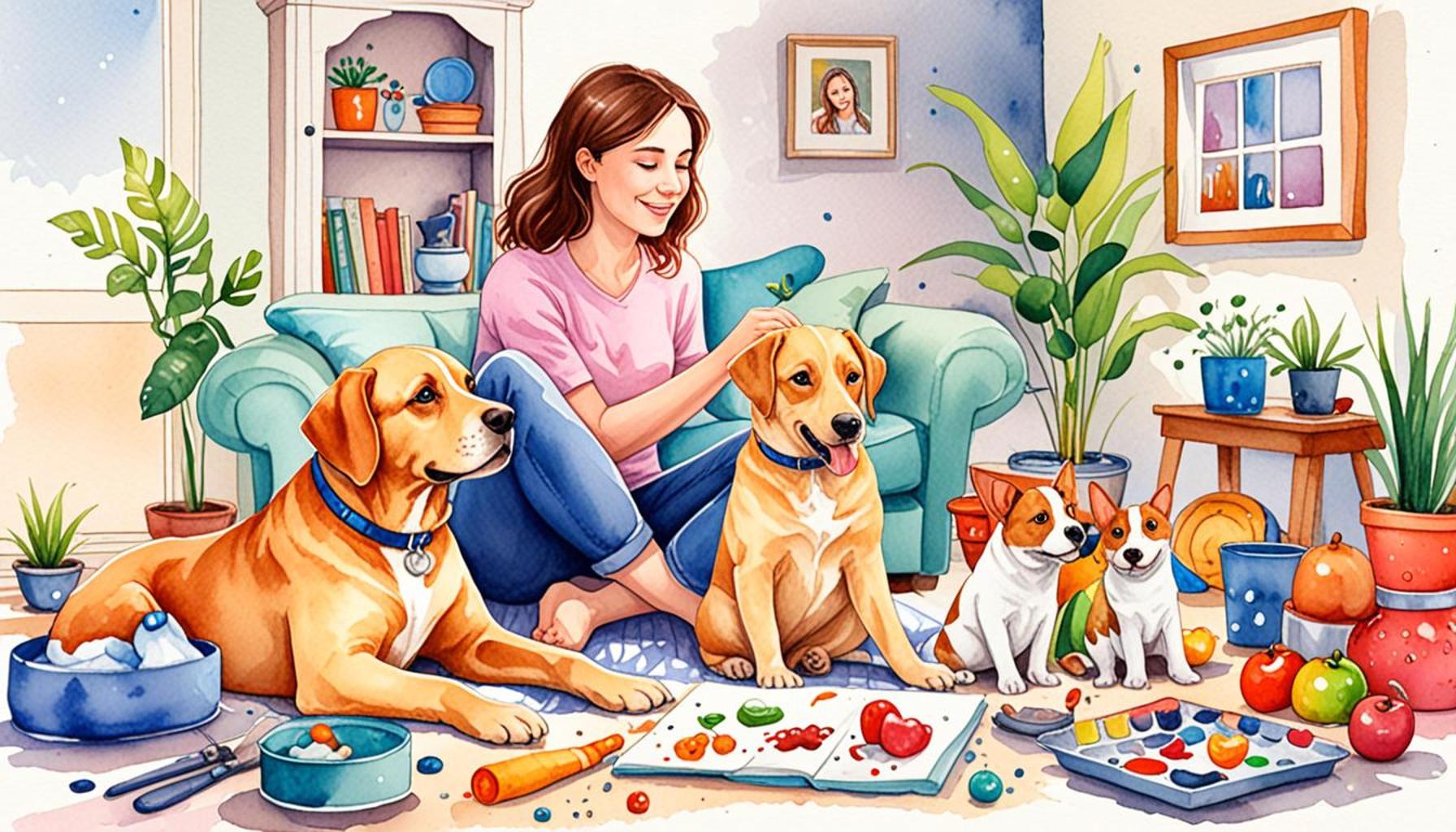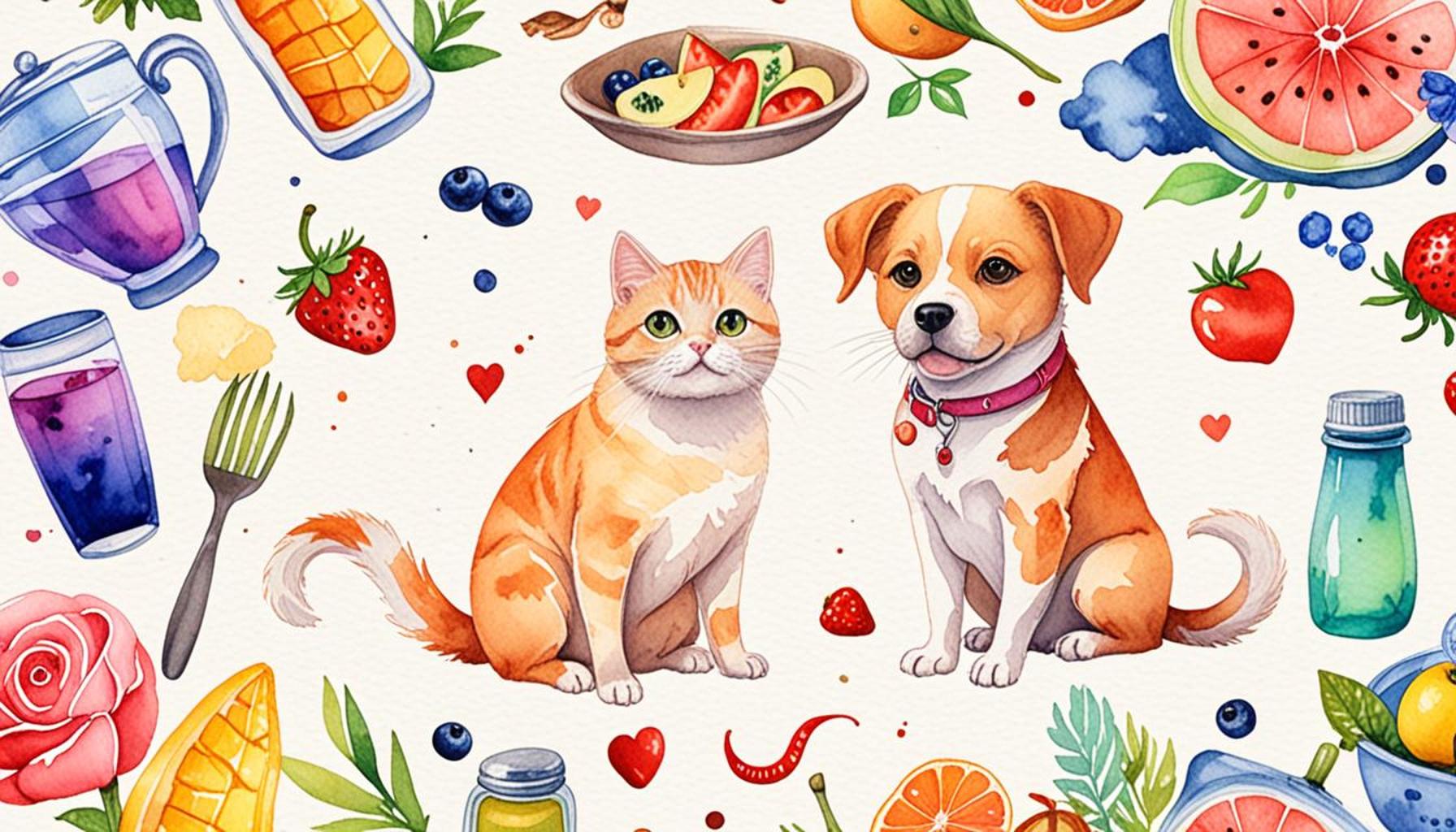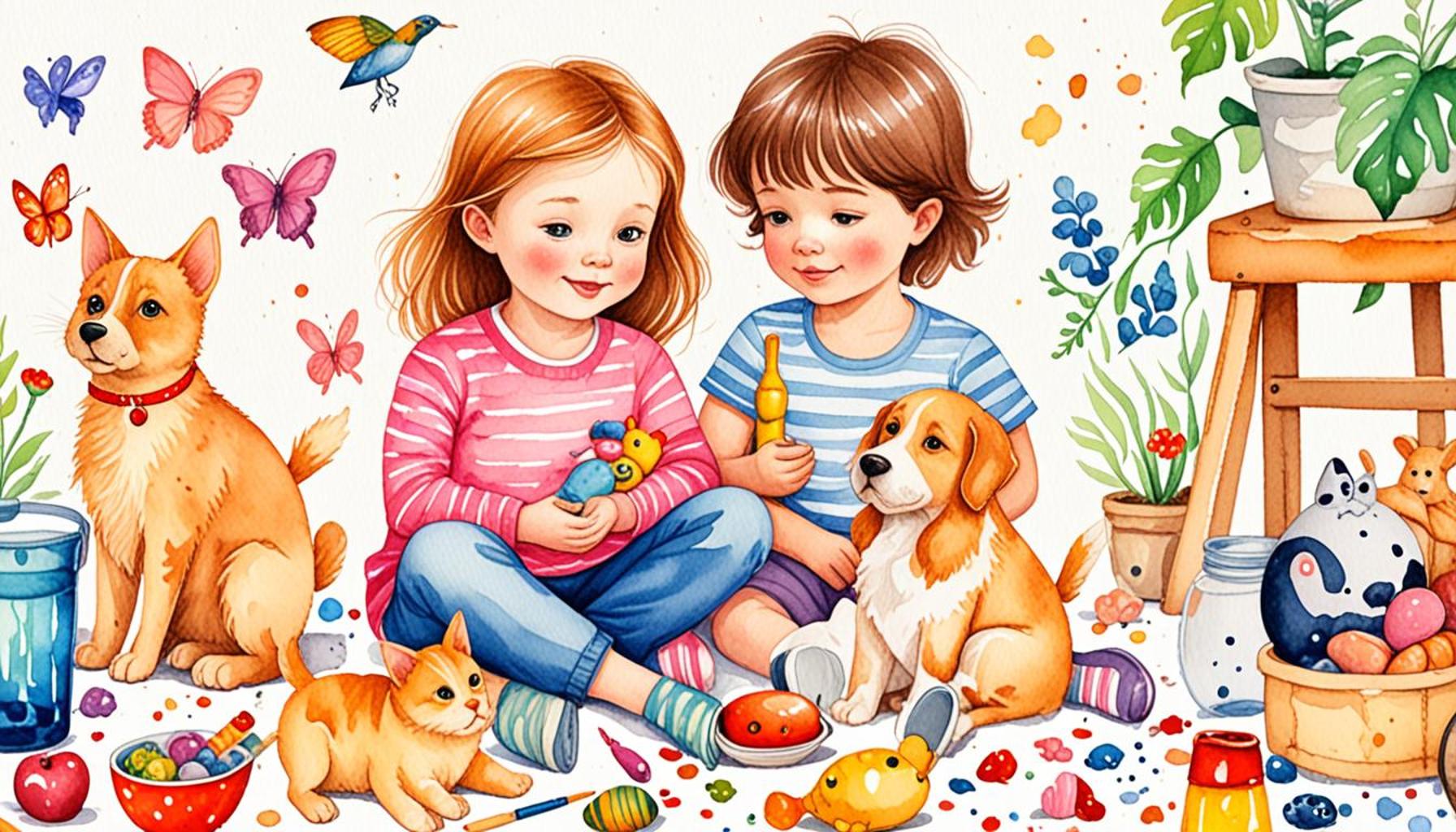The Influence of Companion Animals on Family Dynamics and Interpersonal Relationships

Understanding the Role of Companion Animals
In numerous households across the United States, companion animals serve as more than just pets; they play a pivotal role in shaping family dynamics and interpersonal relationships. The presence of a furry friend can foster connections and create unique interactions among family members. This influence extends beyond mere companionship, deeply integrating pets into the emotional and social fabric of a home. As family members engage in activities centered around their animal companions, they create shared experiences that enhance bonds.
Facets of Influence
The impact of companion animals can be observed in various ways:
- Emotional Support: Pets are often regarded as a source of unconditional love and comfort. Research has shown that interacting with pets can lead to the release of oxytocin, a hormone associated with bonding, which reduces levels of stress and anxiety. For instance, merely petting a dog or cat can lower blood pressure and increase feelings of joy, making them invaluable in providing emotional stability during challenging times.
- Social Bonding: Caring for an animal can significantly strengthen relationships between family members. When children help in feeding or walking the dog, they learn the value of teamwork and mutual responsibility. Parents and siblings often bond over shared responsibilities, while the playful antics of a pet can serve as a catalyst for laughter and joy, easing tensions that may arise in the household.
- Enhanced Communication: Animals encourage dialogue, as family members share responsibilities and experiences related to pet care. Regular conversations about the pet’s needs, behaviors, and well-being can enrich communication within the family unit. Additionally, pets can serve as conversation starters, creating opportunities for family members to engage with one another and even connect to broader social circles when meeting other pet owners.
Research indicates that families with pets typically exhibit higher levels of happiness and lower tension. A study conducted by the American Academy of Child & Adolescent Psychiatry found that children raised in households with pets often develop increased empathy and responsibility, vital life skills that contribute to their social development. This phenomenon calls for a deeper understanding of how companion animals influence familial interactions.
Exploring the Broader Impacts
The dynamics within a family unit can shift significantly with the inclusion of pets. Not only do they offer companionship, but they also challenge our perceptions of relationships. Pets often serve as emotional barometers, responding to the moods of those around them, which can lead to heightened emotional awareness within a family. Furthermore, they may foster inclusivity, allowing family members to feel more connected during shared activities, such as walks in the park or trips to the veterinarian.
This article delves into the complexities and nuances of how animals reshape our social landscapes and enhance our interpersonal connections. As society continues to evolve, so does the role of pets, with the growing trend of “pet parenting” reflecting a deeper emotional bond between humans and their animal companions. The implications of this shift deserve further exploration, as understanding the evolving role of companion animals can lead to greater insights into family dynamics, emotional health, and community building.
DISCOVER MORE: Click here to learn about preventing common pet diseases
The Role of Pets in Strengthening Family Ties
As families navigate the complexities of everyday life, the influence of companion animals emerges as a compelling factor in enhancing familial relationships and nurturing emotional well-being. Pets often act as social facilitators, helping family members connect in meaningful ways. The mere presence of an animal can foster a sense of belonging and unity among family members, often leading to deeper emotional connections and creating a more cohesive family environment.
One major aspect of how companion animals shape family dynamics is through shared experiences. Engaging in activities such as playing with a pet, taking them for walks, or attending training classes provides families with opportunities to bond over enjoyable moments. These interactions can be particularly beneficial for children, who learn valuable lessons about empathy and compassion as they care for their pets. According to a study published in the journal Anthrozoös, children with pets exhibit increased sensitivity to the emotions of others, fostering an atmosphere of support and understanding within the family unit.
The Emotional Benefits of Pet Ownership
The emotional support that companion animals provide can’t be overstated. Pets often fulfill a unique role in households by acting as confidants for family members during times of distress. Their non-judgmental nature and unwavering loyalty create an environment where individuals feel safe to express their thoughts and feelings. This can be especially beneficial for children and adolescents, helping them cultivate emotional intelligence as they communicate their experiences to their pets. Furthermore, studies suggest that pet ownership is linked to higher levels of resilience, allowing families to better cope with stress and adversity.
- Reduced Stress Levels: Interacting with pets has been shown to lower cortisol (the stress hormone) levels. Simply petting a dog or cat can have a calming effect, providing much-needed relief in tense family situations.
- Increased Happiness: The unconditional love and companionship provided by pets can contribute to an uplifted mood, fostering joy in family interactions and activities.
- Encouraging Routine: Caring for a pet introduces structure into family life. Regular feeding, exercise, and grooming routines promote responsibility and can help regulate daily schedules for all family members.
Additionally, pets can serve as a conduit for bringing families together, particularly during significant life events. For instance, the joy of bringing a new puppy into the home can usher in a period of excitement and anticipation, encouraging family members to work together in training and caring for the animal. Likewise, in challenging moments, such as the loss of a family member or during difficult transitions, pets offer companionship and emotional support, helping families heal and bond through shared grief.
In recognizing the profound effects of companion animals on family dynamics, it is evident that pets are far more than just animals; they are integral members of the family. The intricacies of these relationships reveal a clearer picture of the benefits of pet ownership, stirring a deeper understanding of the essential role pets play in enriching our lives.
| Category | Key Features |
|---|---|
| Emotional Support | Companion animals provide a strong source of emotional stability, often helping family members cope with stress and anxiety. |
| Improved Communication | They facilitate open dialogues among family members, as discussions about pet care can enhance interpersonal skills. |
| Strengthened Bonds | Pets encourage shared experiences, fostering relationships and teamwork among family members. |
| Conflict Resolution | The presence of pets can diminish tension and promote a peaceful environment, aiding in conflict resolution. |
The presence of companion animals in the home significantly influences family dynamics and interpersonal relationships. They act as catalysts for emotional support, enabling family members to feel more connected and understood. The unique bond shared with animals facilitates greater communication, as families may find themselves discussing shared caregiving responsibilities or amusing pet antics. This dialogic engagement can enhance interpersonal skills that are vital for harmonious living.Moreover, pets cultivate deeper connections through shared responsibility and experiences. Tasks such as feeding, walking, or simply playing with pets can yield a stronger family unit, as these activities promote teamwork and unity. Interestingly, when conflicts arise, the comforting presence of companion animals often serves to diffuse tension, making resolutions smoother and more amicable.As families navigate life’s challenges, the role of companion animals transcends mere companionship, evolving into an integral part of family life that enriches bonds and fosters a nurturing environment.
DISCOVER MORE: Click here to learn effective training techniques
Companion Animals as Catalysts for Communication
Beyond emotional support, companion animals serve as essential catalysts for enhancing communication among family members. The presence of a pet can break down barriers of conversation, encouraging families to engage in discussions that might otherwise be avoided. Pets often become the focal point of shared dialogue, prompting discussions about their care, quirky behaviors, and amusing anecdotes that, in turn, foster a spirit of camaraderie and connection among family members.
Consider, for instance, how a family with a dog might discuss their pet’s habits during mealtime. Conversations about training successes, funny moments, or even challenges encountered can facilitate an open atmosphere where family members feel comfortable sharing their thoughts. This can be particularly vital for adolescents who may feel alienated during times of emotional upheaval; engaging with a pet can be a gateway to deeper discussions between them and their parents.
Promoting Teamwork and Collaboration
Companion animals often necessitate teamwork, further strengthening family relationships. Tasks such as walking the dog, cleaning the litter box, or planning trips to the vet can require collaboration among family members. These shared responsibilities can promote cooperative problem-solving, teaching valuable lessons about negotiation and compromise. For example, when caring for a pet, children learn to express their preferences, negotiate who will take on which responsibilities, and understand the outcome of their decisions.
Moreover, a study conducted by the American Psychological Association reported that families who engage in pet care together exhibit strong relational dynamics, reporting lower rates of conflict and higher levels of overall satisfaction. Parents, in particular, benefit from witnessing their children develop both empathy and leadership skills as they assume responsibilities for a pet’s welfare. It not only enhances familial bonds but also cultivates these essential life skills within children as they grow.
The Role of Pets in Transition and Change
Transitioning through life stages can be a challenging time for families, yet companion animals hold the unique ability to offer stability and comfort during these periods of change. Whether it’s a child starting school, a family relocation, or the addition of a new family member, pets provide emotional anchorage. For example, children may find solace in their pets when facing the stress of starting kindergarten or adapting to a new neighborhood. The familiar routine of caring for a pet provides children with a sense of normalcy amidst the uncertainty of change.
Interestingly, the presence of pets can also aid in family transitions during separation or divorce. In instances when caregivers share custody of the companion animal, the pet remains a common focus, creating opportunities for families to maintain connections and foster a sense of support during turbulent times. The shared experience of caring for the animal can help mitigate some feelings of separation by establishing continuity amid family restructuring.
The increasing recognition of the role of companion animals in supporting healthy family dynamics encourages a fresh perspective on pet ownership. As families become aware of the profound impact that pets have on their interpersonal relationships and overall well-being, it’s clear that these furry friends are not merely companions; they are vital participants in the fostering of strong family bonds.
DISCOVER MORE: Click here for essential tips
Final Thoughts on Companion Animals and Family Relationships
In conclusion, the profound influence of companion animals on family dynamics and interpersonal relationships cannot be overstated. These cherished pets not only provide unconditional love and emotional companionship but also serve as vital tools for enhancing communication among family members. Their presence fosters open dialogues, creating opportunities for shared experiences that strengthen bonds and facilitate deeper connections.
Moreover, the collaborative nature of pet care teaches invaluable life skills, encouraging teamwork and problem-solving among family members. As families navigate various life transitions, whether through joyous milestones or challenging changes, companion animals offer a sense of stability and mutual support. The important role these pets play during times of upheaval is a testament to their value as integral family members.
As we continue to explore the multifaceted relationships between pets and families, it is essential to recognize that the benefits extend far beyond mere companionship. The emotional, psychological, and social advantages brought by companion animals contribute significantly to the overall well-being of families. This understanding prompts a reevaluation of pet ownership; it is not just about having a furry friend, but about nurturing a relationship that profoundly shapes family dynamics. For those considering welcoming a pet into their home, the implications for improved family cohesion and interpersonal relationships are remarkable, beckoning further investigation into this heartwarming intersection of species.


